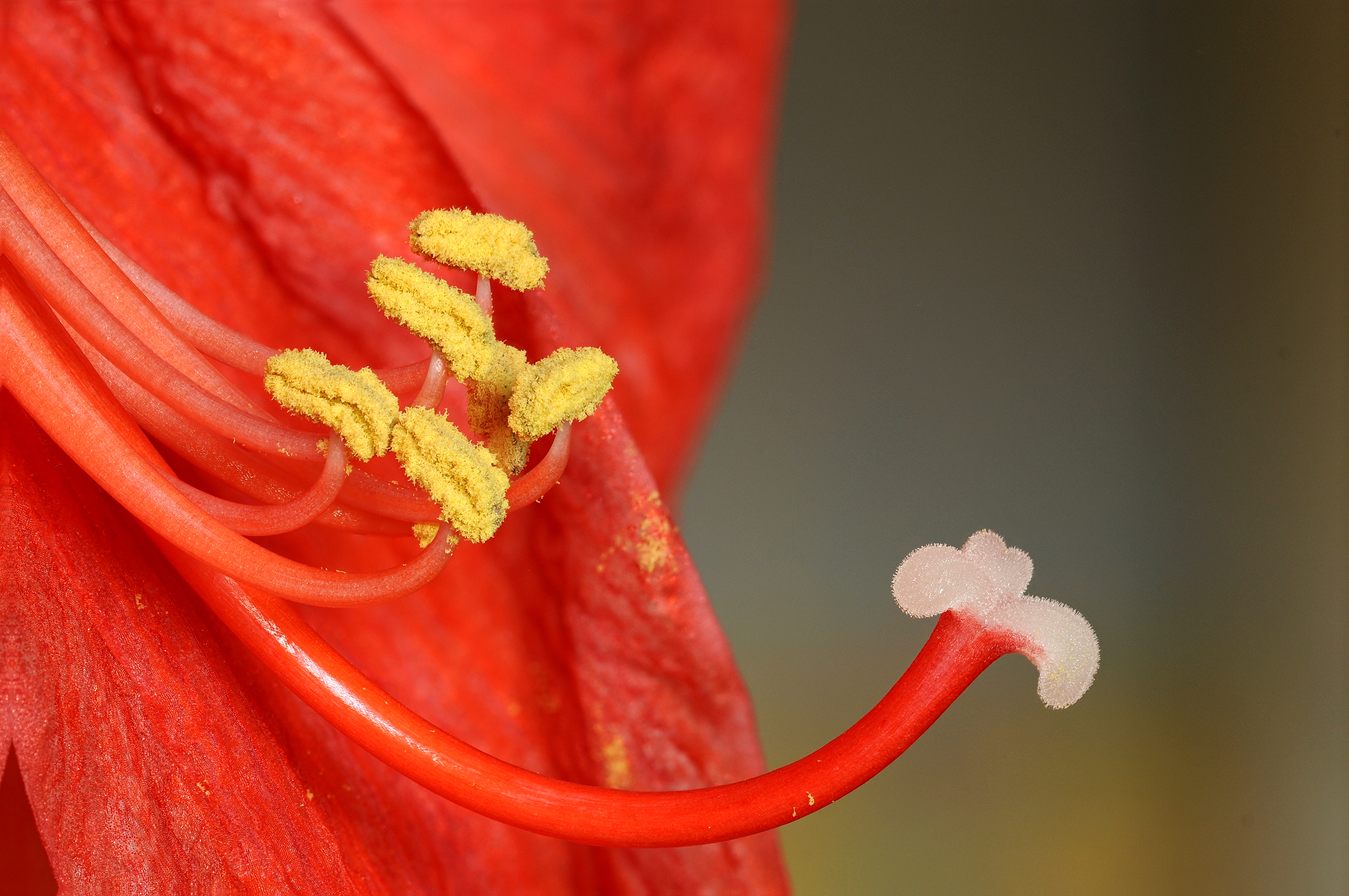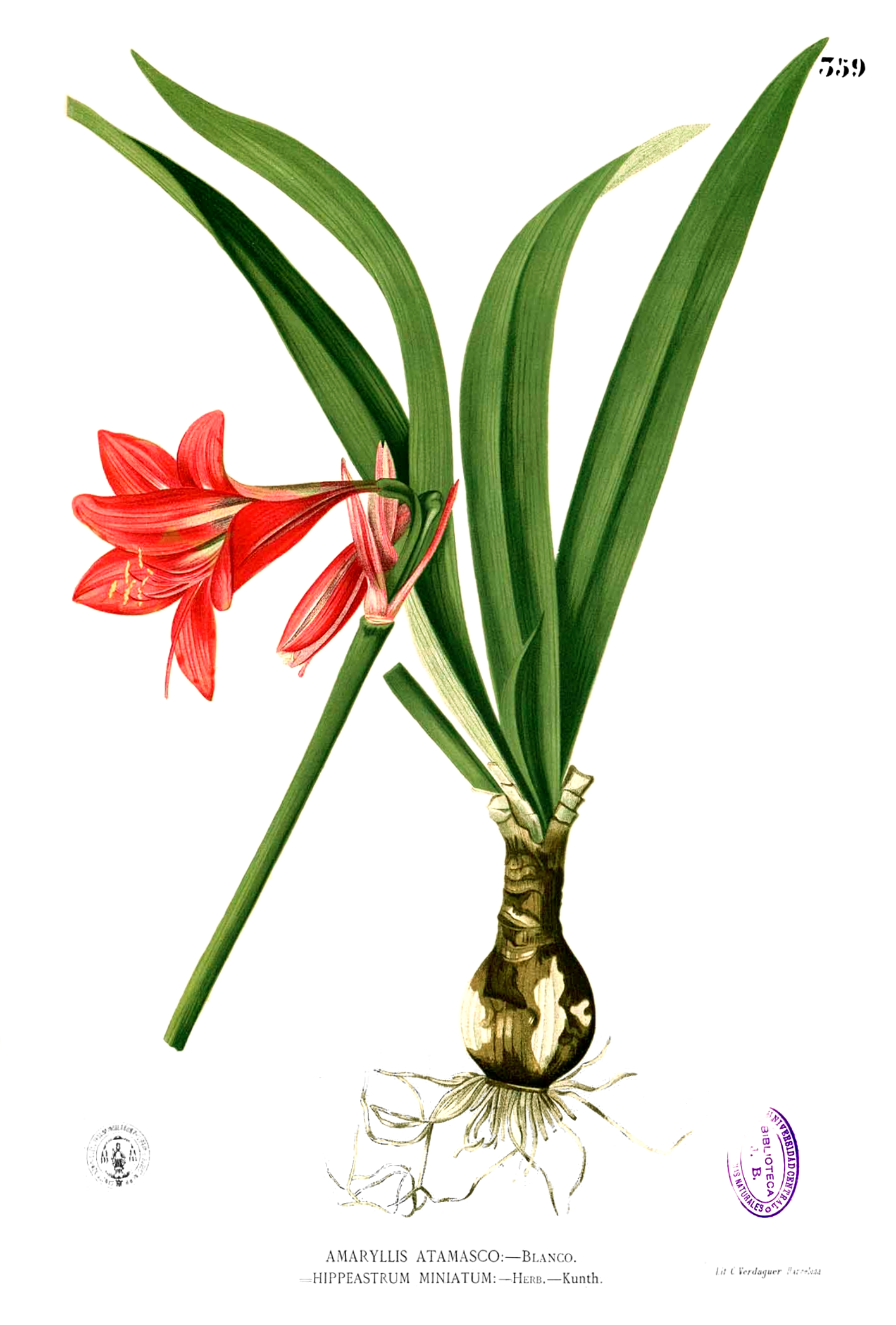|
Hippeastreae
Hippeastreae is a tribe of plants belonging to the subfamily Amaryllidoideae of the Amaryllis family (Amaryllidaceae). Species in this tribe are distributed in South America. Flowers are large and showy, zygomorphic, with the stamens in varying lengths, inflorescence bracts are often fused basally (along one side). The seeds are flattened, winged or D-shaped. Reported basic chromosome numbers are ''x''= 8-13, 17, and higher. All the species in this tribe present a remarkable aesthetic interest and horticultural value. Taxonomy Meerow et al. (1999) provide a history of the treatment of the genera of Amaryllidaceae, including Hippeastreae, from the mid-twentieth century. While morphological phylogeny has been frustrated by the perversive homoplasy typical of the Amaryllidaceae, application of molecular phylogenetics to the Amaryllidaceae did not indicate clear tribal divisions but rather broad biogeographical clades. However the American clade resolved the tribe Hippeastreae. ... [...More Info...] [...Related Items...] OR: [Wikipedia] [Google] [Baidu] |
Amaryllidoideae
Amaryllidoideae (Amaryllidaceae ''s.s.'', amaryllids) is a subfamily of monocot flowering plants in the family Amaryllidaceae, order Asparagales. The most recent APG classification, APG III, takes a broad view of the Amaryllidaceae, which then has three subfamilies, one of which is Amaryllidoideae (the old family Amaryllidaceae), and the others are Allioideae (the old family Alliaceae) and Agapanthoideae (the old family Agapanthaceae). The subfamily consists of about seventy genera, with over eight hundred species, and a worldwide distribution. Description The Amaryllidoideae are herbaceous, perennial flowering plants, usually with bulbs (some are rhizomatous). Their fleshy leaves are arranged in two vertical columns, and their flowers are large. Most of them are bulbous geophytes and many have a long history of cultivation as ornamental plants. They are distinguished from the other two Amaryllidaceae subfamilies (Agapanthoideae and Allioideae) by their unique alkaloidal ... [...More Info...] [...Related Items...] OR: [Wikipedia] [Google] [Baidu] |
Hippeastrinae
Hippeastrinae is a subtribe of plants classified under the tribe Hippeastreae. It belongs to the subfamily Amaryllidoideae of the Amaryllis family ( Amaryllidaceae). Description Terrestrial bulbous perennial herbaceous plants, although three species of ''Hippeastrum'' are epiphytic. The leaf shape is linear, lorate, or lanceolate (''Eithea'' has oblanceolate-petioled leaves). The leaf growth pattern is annual or persistent, and often histeranthous. Their texture is firm, and they are moderately canaliculated internally. The scape is hollow and the spathe has two bracts which may be fused or free. The inflorescence may have between one and thirteen flowers. The flowers, which may be sessile or pedicellate have a perigone that is actinomorphic to highly zygomorphic, and is tubular, campanulate or infundibulorm in shape. The tepal-tube may vary from obsolete to being more than half the length of the perigone. When a paraperigone is present it consists of basal appendag ... [...More Info...] [...Related Items...] OR: [Wikipedia] [Google] [Baidu] |
Traubiinae
'' Phycella cyrtanthoides'' Traubiinae is a subtribe of plants classified under the tribe Hippeastreae. It belongs to the subfamily Amaryllidoideae of the Amaryllis family ( Amaryllidaceae). Description Bulbous perennial herbaceous plants, terrestrial in habitat. Leaves linear or lorate, annual, sometimes hysteranthous. Taxonomy The term was originally used by the Müller-Doblies' in 1996 as a monotypic subtribe of Hippeastreae, to include ''Traubia'', based on Traub's original use of Traubeae for the same purpose. Created from a redistribution of genera of Hippeastreae following a molecular phylogenetic study it is composed of the following genera, based on the presence of lorate-leaves rather than petiolate, which form the remaining genera of the tribe Hippeastreae, ''i.e.'' Hippeastrinae. In this redistribution the four species of ''Famatina'' were polyphyletic and ''F. maulensis'' segregated with ''Phycella'' and was consequently transferred: The generic d ... [...More Info...] [...Related Items...] OR: [Wikipedia] [Google] [Baidu] |
Amaryllidaceae
The Amaryllidaceae are a family of herbaceous, mainly perennial and bulbous (rarely rhizomatous) flowering plants in the monocot order Asparagales. The family takes its name from the genus ''Amaryllis'' and is commonly known as the amaryllis family. The leaves are usually linear, and the flowers are usually bisexual and symmetrical, arranged in umbels on the stem. The petals and sepals are undifferentiated as tepals, which may be fused at the base into a floral tube. Some also display a corona. Allyl sulfide compounds produce the characteristic odour of the onion subfamily (Allioideae). The family, which was originally created in 1805, now contains about 1600 species, divided into about 70–75 genera, 17 tribes and three subfamilies, the Agapanthoideae (agapanthus), Allioideae (onions and chives) and Amaryllidoideae (amaryllis, daffodils, snowdrops). Over time, it has seen much reorganisation and at various times was combined with the related Liliaceae. Since 2009, a very broa ... [...More Info...] [...Related Items...] OR: [Wikipedia] [Google] [Baidu] |
Hippeastrum
''Hippeastrum'' () is a genus of about 90 species and over 600 hybrids and cultivars of perennial herbaceous bulbous plants. They generally have large fleshy bulbs and tall broad leaves, generally evergreen, and large red or purple flowers. ''Hippeastrum'' is a genus in the family Amaryllidaceae (subfamily Amaryllidoideae, tribe Hippeastreae, and subtribe Hippeastrineae). The name ''Hippeastrum'', given to it by William Herbert, means "knight's star", although precisely what Herbert meant by the name is not certain. For many years there was confusion among botanists over the generic names ''Amaryllis'' and ''Hippeastrum'', one result of which is that the common name amaryllis is mainly used for cultivars of this genus, often sold as indoor flowering bulbs particularly at Christmas in the northern hemisphere. By contrast the generic name ''Amaryllis'' applies to bulbs from South Africa, usually grown outdoors. The genus is native to tropical and subtropical regions of the A ... [...More Info...] [...Related Items...] OR: [Wikipedia] [Google] [Baidu] |
Griffineae
The tribe Griffineae (in the family Amaryllidaceae, subfamily Amaryllidoideae) includes 2 genera with 22 species from South America which are actually endemic to Brazil. A typical character of the representatives of the tribe are the flowers - They are with blue or lilac color collected into an umbel. Only the members of this tribe and the genus '' Lycoris'' are able to form flowers with such color in the whole family Amaryllidaceae. The plants in this group are typical perennial flowers which are producing bulbs. The leaves are green, with elliptical form in the most of the cases but in some members as in '' Worsleya'' they are sword-shaped. Taxonomy The Müller-Doblies' (1996) placed ''Griffinia'' in its own subtribe Griffiniinae (of tribe Hippeastreae) and did not recognise ''Worsleya'', which they submerged in ''Phycella''. In contrast, Meerow and Snijman (1998) resurrected it, placing both genera within Hippeastreae. Subsequently, molecular phylogenetic studies demonstr ... [...More Info...] [...Related Items...] OR: [Wikipedia] [Google] [Baidu] |
Zephyranthes
''Zephyranthes'' is a genus of temperate and tropical plants in the Amaryllis family, subfamily Amaryllidoideae, native to the Western Hemisphere and widely cultivated as ornamentals. Following the expansion of the genus in 2019, which now includes the genera ''Habranthus'' and ''Sprekelia'', there are about 200 recognized species, as well as numerous hybrids and cultivars. Common names for species in this genus include fairy lily, rainflower, zephyr lily, magic lily, Atamasco lily, and rain lily. The name is derived from Ζέφυρος (''Zephyrus''), the Greek god of the west wind, and ἄνθος (''anthos''), meaning flower, referring to the slender stalks. Description Species in the genus which are listed in this article vary in morphology. Along with floral morphology, characteristics such as bulb size, bulb tunic color, and leaf morphology help identify individual species. Foliage in the wild is often ephemeral, but under cultivation becomes more persistent. Le ... [...More Info...] [...Related Items...] OR: [Wikipedia] [Google] [Baidu] |
Rhodophiala
''Rhodophiala'' was a genus of herbaceous, perennial and bulbous plants in the Amaryllis family (Amaryllidaceae, subfamily Amaryllidoideae). It consisted of about 30 South American species distributed in southern Brazil, Argentina, and, specially, in Chile. Most of the species are known colloquially as ''añañuca''. It has now been submerged in ''Zephyranthes''. Description ''Rhodophiala'' species resemble small-flowered ''Hippeastrum'' or multiflowered ''Habranthus'' species. Their narrow parallel-sided leaves are unlike that of ''Hippeastrum'', more closely resembling that of ''Habranthus'' or ''Zephyranthes''. Taxonomy At one stage, ''Rhodophiala'' was considered a subgenus of the closely related ''Hippeastrum''. Although as of February 2016 not yet accepted by the World Checklist of Selected Plant Families a number of species of ''Rhodophiala'' have been rehabilitated as ''Rhodolirium''. Species The World Checklist of Selected Plant Families accepts 27 species :Search ... [...More Info...] [...Related Items...] OR: [Wikipedia] [Google] [Baidu] |
Lycorideae
Lycorideae are a small tribe of subfamily Amaryllidoideae (family Amaryllidaceae). They are herbaceous monocot perennial flowering plants endemic to Asia, and consisting of two genera including the type genus In biological taxonomy, the type genus is the genus which defines a biological family and the root of the family name. Zoological nomenclature According to the International Code of Zoological Nomenclature, "The name-bearing type of a nominal ..., '' Lycoris''. Taxonomy Phylogeny The placement of Lycorideae within subfamily Amaryllidoideae is shown in the following cladogram: Subdivision There are two genera: * '' Lycoris'' * '' Ungernia'' References Bibliography * * * External links * * {{Taxonbar, from=Q9025725 Amaryllidoideae Asparagales tribes ... [...More Info...] [...Related Items...] OR: [Wikipedia] [Google] [Baidu] |
Amaryllideae
Amaryllideae are a tribe of subfamily Amaryllidoideae (family Amaryllidaceae). They are herbaceous monocot perennial flowering plants with a predominantly Southern African distribution, with the exception of the pantropical genus ''Crinum''. They are generally treated as consisting of four subtribes. In addition to ''Crinum'', other genera include ''Amaryllis'', ''Boophone'' and ''Strumaria''. Taxonomy Phylogeny The placement of Amaryllideae within subfamily Amaryllidoideae is shown in the following cladogram: Subdivision There are four subtribes: * Amaryllidinae Pax * Boophoninae D.Müll.-Doblies & U.Müll.-Doblies * Crininae Baker * Strumariinae Traub ex D.Müll.-Doblies & U.Müll.-DobliesBot. Jahrb. 107: 18. 1985 emend Meerow & Snijman, 2001. These are phylogenetically related as follows: Amaryllidinae: Type. Monogeneric subtribe for genus ''Amaryllis''. Boophoninae: Monogeneric subtribe for genus ''Boophone''. Crininae: Three genera including ''Crin ... [...More Info...] [...Related Items...] OR: [Wikipedia] [Google] [Baidu] |
Cyrtantheae
''Cyrtanthus'' is a genus of perennial, herbaceous and bulbous plants in the family Amaryllidaceae, subfamily Amaryllidoideae. Taxonomy ''Cyrtanthus'' is the sole genus in the African tribe Cyrtantheae. Phylogeny The placement of Cyrtantheae within subfamily Amaryllidoideae is shown in the following cladogram: Subdivision There are over 50 recognized species, all native to central and southern Africa Africa is the world's second-largest and second-most populous continent, after Asia in both cases. At about 30.3 million km2 (11.7 million square miles) including adjacent islands, it covers 6% of Earth's total surface area .... References Bibliography * External links Images of several species of ''Cyrtanthus'' from Pacific Bulb Society {{Taxonbar, from=Q310372, from2=Q10464992, emonocot=303795 Amaryllidaceae genera Amaryllidoideae Flora of Africa ... [...More Info...] [...Related Items...] OR: [Wikipedia] [Google] [Baidu] |
Haemantheae
Haemantheae are a tribe of subfamily Amaryllidoideae (family Amaryllidaceae). They are herbaceous monocot perennial flowering plants with a predominantly African distribution. Three subtribes are proposed and six genera including the type genus, ''Haemanthus'', are included. They are characterised by the presence of baccate (berry) fruit. Taxonomy Phylogeny The placement of Haemantheae within subfamily Amaryllidoideae is shown in the following cladogram: Subdivision There are three subtribes, with six genera * Cliviinae D.Müll.-Doblies & U.Müll.-Doblies * Haemanthinae Pax * Gethyllidinae Meerow The subtribes are related as follows: Cliviinae: Two genera - ''Clivia'', ''Cryptostephanus'' Haemanthinae: Type - two genera, ''Haemanthus'', ''Scadoxus'' Gethyllidinae: Two genera - ''Apodolirion ''Apodolirion'' is a genus of herbaceous, perennial and bulbous plants in the Amaryllis family ( Amaryllidaceae, subfamily Amaryllidoideae). It consists of 6 species d ... [...More Info...] [...Related Items...] OR: [Wikipedia] [Google] [Baidu] |



